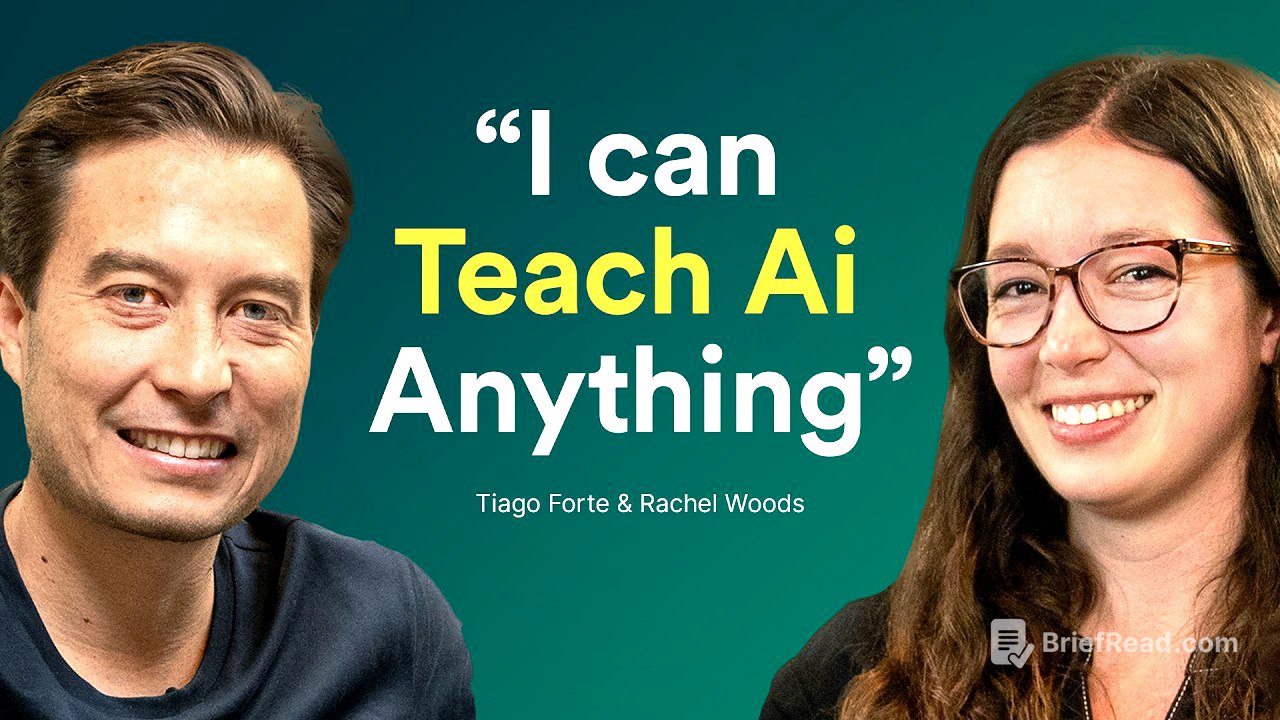TLDR;
This video features an interview with Rachel Woods, an expert in AI operations, who shares her insights on how businesses can effectively integrate AI into their processes. She introduces the concept of AI operations, highlighting the importance of the AI Operator role, and presents the CRAFT method, a 5-step framework for AIifying processes. The discussion also touches on the visionary and implementer roles, the significance of human connection, and the idea of "unlimited time" in a future where AI handles many tasks.
- AI operations is about defining how AI operates in a business by creating processes and instructions.
- The three essential AI roles are Visionary, Operator, and Implementer.
- The CRAFT method (Clear picture, Realistic design, AI, Feedback, Team roll out) is a 5-step framework for AIifying processes.
Intro [0:00]
Rachel Woods is introduced as an expert in AI operations, capable of teaching AI to handle almost any business process. The discussion will cover the most valuable role in AI transformation and how process-oriented individuals can excel in the AI field.
About Rachel and her background in AI operations [0:48]
Rachel Woods discusses her background in AI, starting almost a decade ago with exposure to language models. She worked at Facebook's AI research team and various tech startups before creating content online and founding the AI Exchange community. Her focus on AI operations stemmed from the challenges of running and scaling a business, where executing ideas effectively is crucial. She found that defining business processes allowed her to use AI to operate the business according to those definitions. People have told her she thinks like an AI, which has helped her develop methods for others to adopt a similar mindset. She explains that language models convert words into numbers and predict the next most likely word based on learned patterns. Thinking about AI like working with people can help overcome common struggles, as AI training involves design, strategy, and understanding complexities, similar to managing human teams.
The three essential AI roles: Visionary, Operator, and Implementer [10:10]
Rachel introduces the three essential roles for implementing AI in a business: the AI Visionary, who sets the strategy; the AI Implementer, the technical person who connects the systems; and the AI Operator, who is process-minded and shepherds AI integration into the business. The AI Operator defines processes with the team and manages the execution of AI tasks. The AI Visionary should be at an executive level to ensure buy-in and excitement, while the AI Implementer's technical skills depend on the complexity of the AI projects. A common pitfall is combining the Implementer and Operator roles, as the Implementer may be too focused on technical details to see the broader process.
Who makes a great AI Operator - "ClickUp queens and kings" [17:35]
Rachel describes the ideal AI Operator as someone with a process-oriented mind, such as a project manager or a "ClickUp queen or king." These individuals excel at breaking down complex tasks into steps, documenting processes, and staying organized. AI Operators often run projects, working with subject matter experts to map out current processes through interviews and follow-up questions. It's advantageous for AI Operators to be unfamiliar with the processes they are mapping, as this helps them ask better questions and identify unclear steps. A centralized AI operations team can benefit an entire organization by preventing departments from relearning the same lessons. AI Operators should be well-compensated and respected, with opportunities for promotion. A key misconception is that AI Operators need to be technical; AI operations can be done with just prompts. The AI Exchange has shifted its focus to cater to this role, aiming to equip every company with at least one AI Operator.
The CRAFT Method - 5-step framework for AIifying processes [28:23]
Rachel introduces the CRAFT method, a 5-step cycle for integrating AI into business processes: Clear picture, Realistic design, AI, Feedback, and Team roll out. The "Clear picture" phase involves understanding the current process and the desired AI involvement. The "Realistic design" phase focuses on narrowing the scope to a manageable piece of the process. The "AI" phase is where the building and implementation occur. The "Feedback" phase is crucial for refining the AI's performance. The "Team roll out" phase involves integrating the AI into the team's workflow with training and success metrics. Divvy Up uses the CRAFT process with every client, aiming to teach them to run it internally.
Unlimited Time concept - reimagining work without time constraints [48:46]
Rachel discusses the concept of "unlimited time," suggesting that AI can eliminate time as a bottleneck. She challenges businesses to consider what they would do with unlimited time and to pursue those opportunities. This involves identifying tasks that are only done for high-paying clients or projects and finding ways to replicate that level of attention to detail consistently. By delegating tasks to AI, individuals gain a broader perspective, enabling them to identify new improvements. This cycle of time unlocking leads to further opportunities and innovation.
How to connect with Rachel and the AI Exchange community [52:49]
Rachel invites aspiring AI operators to explore the AI Exchange for resources and perspectives. She also shares content on platforms like LinkedIn. Divvy Up agency focuses on enabling small and medium-sized service businesses, helping them achieve "unlimited time." The agency uses AI in its qualification process and emphasizes the importance of human connection in guiding clients through AI integration.









